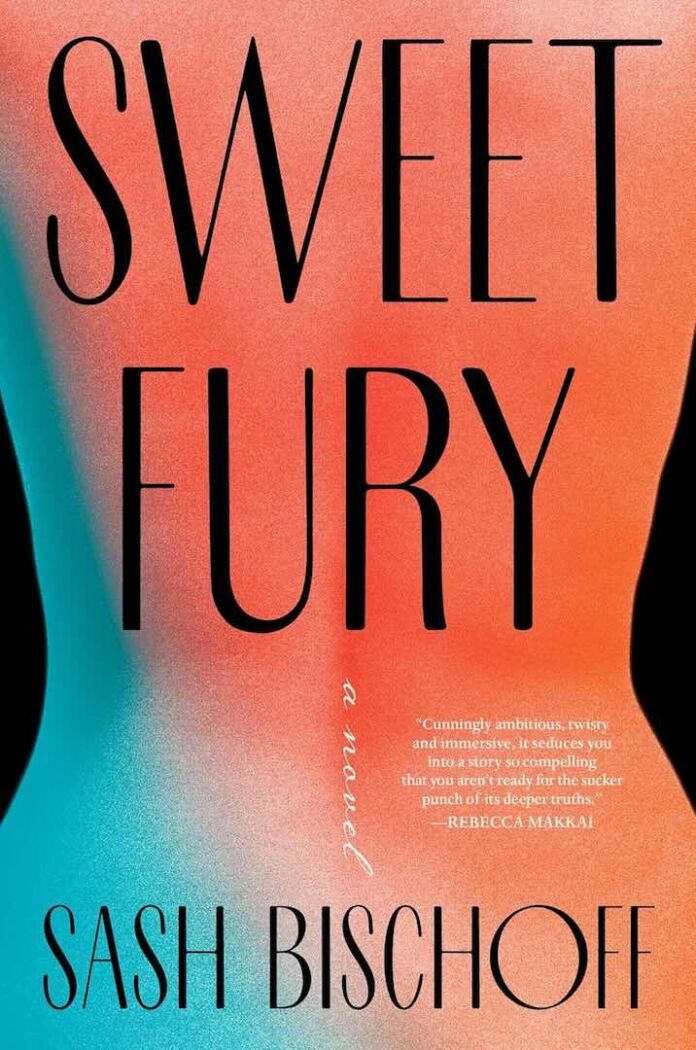In her electrifying debut novel Sweet Fury, Sash Bischoff crafts an intricate psychological thriller that masterfully weaves together themes of trauma, revenge, and the complicated nature of truth. Set against the backdrop of New York’s elite film industry, the novel presents a complex tapestry of characters whose carefully constructed facades begin to crack under the weight of their own deceptions.
Plot and Structure
The story follows Lila Crayne, America’s beloved actress, as she prepares for her role in a feminist adaptation of F. Scott Fitzgerald’s Tender Is the Night. While working with therapist Jonah Gabriel to process her past trauma, Lila’s perfectly curated life begins to unravel. What initially appears to be a straightforward narrative of therapy and healing evolves into a sophisticated game of cat and mouse, where the roles of victim and perpetrator become increasingly blurred.
Bischoff’s structure is particularly notable for its:
- Multiple perspectives that gradually reveal deeper truths
- Strategic use of journal entries and therapy notes
- Careful pacing that builds to a stunning climax
- Skillful integration of past and present narratives
Writing Style
Bischoff’s prose is sharp and precise, reflecting her background in theater direction. Her scenes are choreographed with cinematic precision, creating vivid imagery that stays with readers long after they’ve finished the book. The author demonstrates remarkable control over her material, doling out revelations with expert timing while maintaining psychological complexity throughout.
Character Development
One of the novel’s greatest strengths lies in its layered characterization:
Lila Crayne
- Initially presented as a sympathetic victim
- Gradually reveals unexpected depths and complexities
- Masterfully crafted unreliability as a narrator
Jonah Gabriel
- Complex portrayal of obsession and self-deception
- Compelling descent from professional boundaries to dangerous fixation
- Well-developed backstory that informs present actions
Supporting Characters
- Kurt Royall: More than just the stereotypical controlling partner
- Maggie: A touching portrayal of collateral damage
- Celia: A crucial piece in the larger puzzle of revenge
Thematic Depth
The novel explores several interconnected themes with remarkable sophistication:
- The Nature of Truth and Perception
- Power Dynamics in Professional and Personal Relationships
- The Complexity of Trauma and Recovery
- The Fine Line Between Justice and Revenge
- The Role of Performance in Daily Life
Literary Merit
Bischoff’s engagement with Fitzgerald’s work goes beyond mere homage. Her novel functions as both a critique and a reimagining of Fitzgerald’s themes, particularly his treatment of women characters. The parallel structure with Tender Is the Night adds layers of meaning without becoming heavy-handed.
Technical Execution
The author demonstrates considerable skill in:
- Maintaining tension across multiple timelines
- Creating authentic dialogue that serves character and plot
- Crafting believable therapeutic interactions
- Building and subverting reader expectations
Critical Analysis
While the novel is overwhelmingly successful, there are a few areas where it could be stronger:
- Some secondary plot threads could be more fully developed
- Certain coincidences strain credibility
- The final act, while powerful, might feel overwhelming to some readers
Industry Commentary
The novel’s portrayal of Hollywood power dynamics and the film industry’s treatment of women feels particularly timely and authentic. Bischoff’s insider knowledge of the entertainment industry (drawn from her theater background) lends credibility to these elements.
Comparison to Contemporary Works
Sweet Fury by Sash Bischoff stands alongside recent psychological thrillers like Gillian Flynn’s Gone Girl and Jean Hanff Korelitz’s The Plot, but brings its own unique literary sensibility. The novel’s engagement with classic literature sets it apart from typical genre offerings.
Impact and Relevance
The book’s exploration of trauma, power, and revenge resonates strongly with current discussions about justice and accountability. Bischoff’s treatment of these themes is both nuanced and thought-provoking.
Target Audience
This novel will particularly appeal to readers who enjoy:
- Complex psychological thrillers
- Literary fiction with genre elements
- Stories about Hollywood and the entertainment industry
- Nuanced explorations of trauma and revenge
- Clever engagement with classic literature
Final Thoughts
Sweet Fury is an impressive debut that announces Sash Bischoff as a major new voice in contemporary fiction. While it functions perfectly as a gripping thriller, its literary ambitions and thematic complexity elevate it above typical genre fare.
Strengths
- Sophisticated plot construction
- Complex, well-developed characters
- Elegant prose style
- Thoughtful engagement with literary themes
- Compelling psychological tension
Areas for Improvement
- Some plot points could be better developed
- Occasional reliance on coincidence
- Potentially overwhelming complexity in final act
Sweet Fury by Sash Bischoff is a remarkable achievement that works on multiple levels—as a gripping thriller, a literary homage, and a commentary on contemporary power dynamics. Bischoff has created something rare: a debut novel that is both intellectually satisfying and impossible to put down.
The book reminds us that truth is often more complex than we imagine, and that the stories we tell ourselves can be both salvation and prison. It’s a powerful debut from an author to watch, and a must-read for fans of sophisticated psychological thrillers.





